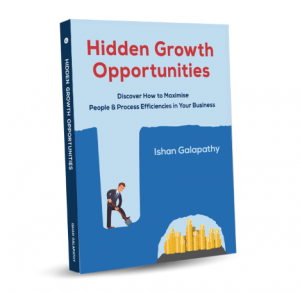How many business improvement initiatives have you started, only to find yourself in one of the following scenarios a few team meetings later:
• drifted away from the original issue.
• bitten off too much and struggling wrap up.
• unable to demonstrate if you have actually made a difference (improvement) or not.
If you nodded at least once, the reason is lack of clarity on the problem you are trying to solve with your team.
I always make it a point to ask individual team members of any improvement project, if they could explain the problem that they are solving to a friend outside of work. One should be able to articulate why this project is important and why now? And what will it do to the overall business? If you want to take it up another notch, see if you can do it in less than 30sec, without any company acronyms/jargon. Is it clear to your friend exactly what you are trying to improve and why?
There are many tools we can utilise to capture a clear, concise problem statement –
5W1H is one of my favourites. Before you rush off to Google 5W1H, let me just add a little bit more to it. Use this tool the way a doctor investigates when you present a problem. For example, asking questions such as, how long have you been feeling unwell? Does it hurt and if so, where? What kind of a pain is it? On a scale of 1-10, how bad is it?
Use the insights gained from the 5W1H to create a succinct problem definition that reads like “we are improving <insert specific product/work centre/line> <insert problem> from <starting condition> to <improved condition> by <insert end date>. This is important because of <insert business case>”
Here are some examples:
- Improving line 2 downtime from an average of 35min per shift to less than 10min by the end of the financial year. This is important as this will be a key line for us in the new financial year.
- Reducing the waste of product ABC from the current average of 6.3% to less than 4% by 30th May. This is important as the business is planning to double the volume of this product later in the second half.
You can state these problems to anyone outside of work and the chances are high that they would understand what you are trying to do and why.
Chris McChesney, (Wall Street Journal #1 National Best-Selling Author of The 4 Disciplines of Execution, and the current Global Practice Leader of Execution for Franklin Covey), states to articulate projects with a clear start-line, finish-line and the deadline – great way of remembering how to capture a clear problem statement.
The most important thing when leading a project is to be confident. Confidence comes from clarity – one cannot be confident unless it is clear in one’s head. A clear problem statement will help you achieve that.
Unless the problem is clear, you cannot lead confidently. If you are not confident, then you will not believe that your project/initiative will be successful. If YOU don’t believe, then your team members will not.
Gain clarity. Gain confidence. Make a difference.





